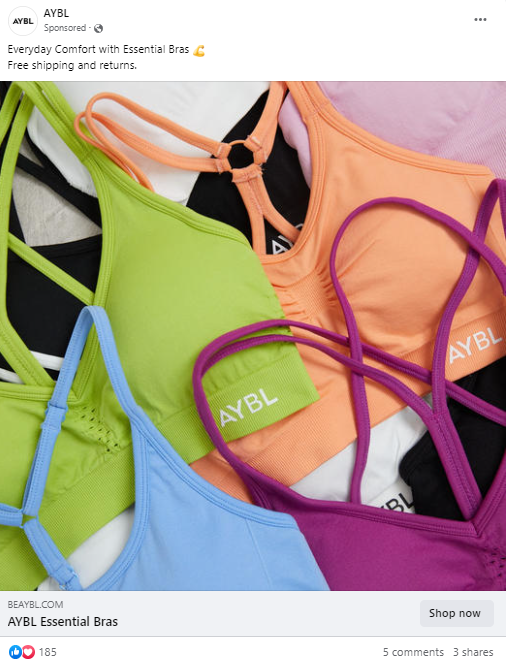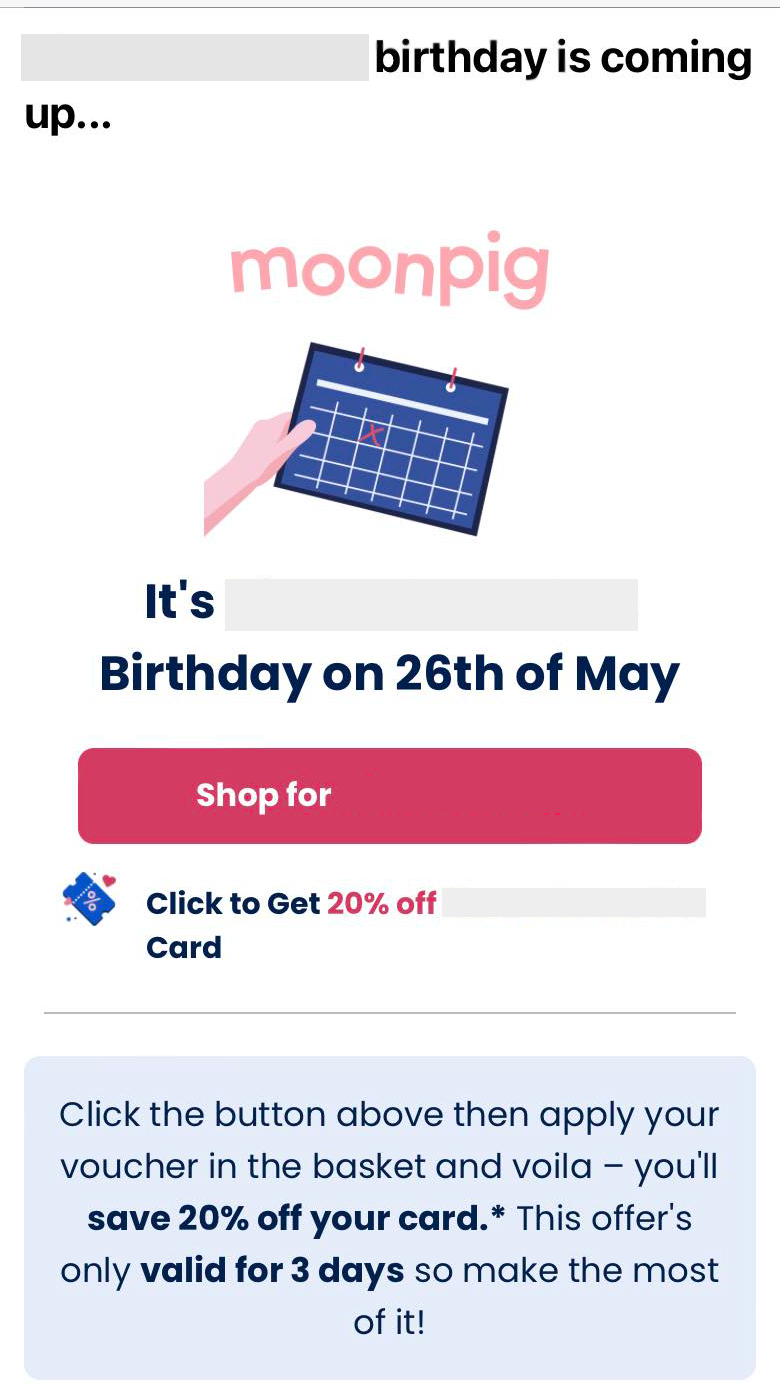Remarketing and retargeting are often confused with each other, although they do possess similarities, they are not the same. It’s important to understand the differences between these two approaches if you plan to use them effectively.
If you’ve never used these strategies before, don’t worry — in the following post, we’ll go through the basics of both retargeting and remarketing, highlighting their differences, and suggest which technique you should prioritise in your digital marketing strategy.
- What is retargeting?
- How does retargeting work?
- Types of retargeting
- Why should you employ a retargeting strategy?
- What is remarketing?
- Types of remarketing
- Why should your employ a remarketing strategy?
- Differences between retargeting and remarketing
- Should you be using retargeting or remarketing?
Did you know that 97% of people who visit your site for the first time leave without buying anything? That is a huge amount of potential sales to miss out on, unless you can bring them back… well that’s where retargeting comes in!
What is retargeting?
Retargeting is a long-term marketing strategy which involves pulling in new audiences or customers through ads on social media, email or other platforms. The aim of this technique is to reach new customers and leads whilst increasing brand awareness.
This approach primarily employs paid ads across a variety of online channels (search, social, display etc.) to remind prospective customers and leads about your products and services. Keeping your business top of mind whilst they browse elsewhere online.
With retargeted advertising, you can demonstrate how your product or service fits into someone’s lifestyle and solves a specific problem.
EXAMPLE
For example, although I’ve never purchased from AYBL I saw this ad whilst scrolling Facebook.

This ad promotes their gym wear to prospective customers (me) by highlighting the benefits of their product and business. It is likely I was targeted with this ad because I have previously browsed their website and fit into their target audience.
How does retargeting work?
Have you ever visited a website but didn’t provide any of your personal information, and then the next day, while browsing a different website or scrolling on social media, you saw an ad for the website you visited the day before? That means you were “retargeted.”
So how does it work?
Basically, retargeting works by utilising “cookies” (small files of information which contain unique data to identify a user’s computer to the network). Cookies are placed in the browsers of visitors who enter your website, click on a product, or take a certain action that you want them to take.
In retargeting, cookies are used with JavaScript code enabling them to anonymously follow users across the web and remember information about their visit. Marketers can then tap into that information to serve personalised ads to specific users and customise their user experience on their website. For example, you could create a retargeting campaign to target people who visited your site but didn’t complete a purchase, to encourage them to return.
Types of retargeting
There are countless types of retargeting ads available, and retargeting campaigns can appear in the form of display ads, social ads, emails etc. across a wide range of platforms such as Google, Facebook, LinkedIn, and more.
Here is an example of how a retargeting ad works on Linkedin:

In addition to the number of platforms you can retarget on, there are lots of different ways to retarget individuals based on their online behaviour.
Here are some examples of how you can target individuals:
- Which pages of your website they have viewed.
- How long they spent of your website
- On specific links they clicked.
- Based on a product that they viewed or added to their cart/basket, but didn’t purchase.
- Individuals who have watched a video.
- Based on how the channel they used to find your website (social media, a search, or other inbound events).
Why should you employ a retargeting strategy?
There are many benefits to implementing a retargeting strategy. This marketing technique is great for boosting brand awareness because individuals are repeatedly exposed to your brand online. IAB found that 70% of marketers turn to search retargeting primarily to increase brand awareness.
According to Sharp Spring, only 2% of website visitors convert on the first visit whereas, users who view retargeting ads are 70% more likely to convert. So it doesn’t come as a surprise that 68% of marketing agencies and 49% of brands have a dedicated budget for retargeting.
Furthermore, by adopting a retargeting strategy you will create a cross-channel synergy among your advertising efforts. By combining search and social media, you can reach leads in an efficient and effective way.
Depending on your business type, it can take customers anywhere from a day to four years to make a decision. Therefore, implementing retargeting ads in your marketing strategy can be a really powerful way not only to encourage users back to your website but also to speed up the decision-making process.
What is remarketing?
On the other hand, remarketing focuses exclusively on re-engaging existing leads or inactive clients. This strategy primarily uses email to target people whose contact information has already been acquired, with the aim to improve customer relationships – whilst of course encouraging them to make a purchase.
How does remarketing work?
Remarketing typically works by sending email campaigns to visitors who have browsed your website or abandoned their cart. The process involves collecting information from users and building lists that are later used to send marketing emails to those users (often including some sort of offer or discount).
The aim of this marketing technique is to get website visitors who have previously provided some of their information but didn’t convert (or customers who haven’t purchased in a while) back onto your website.
Remarketing techniques can include emailing a customer to renew a service, sending them a newsletter, or upselling a product. For instance, if you have previously attended one of our webinars (you should, they’re really good) and we have an upcoming webinar on a similar topic, it is likely we would email you to invite you to it – this is an example of remarketing.
Or take this example from Moonpig. As most people have, I’ve purchased birthday cards from them in the past. They recently sent me this email to inform me of an upcoming birthday.

The goal of this email is not only to remind me about the upcoming occasion but to offer me an incentive (20% discount) to encourage me to browse their website and purchase a product.
Types of remarketing
As previously mentioned, remarketing works off email lists, which can be created based on a huge variety of criteria.
For instance, on Hubspot you can determine list criteria using up to 250 filters. You can set criteria for your lists based on contact, company, deal, ticket, activity or line item properties. Contact lists can also be segmented based on product, sequence enrolment , payment, feedback submission, and custom object properties.
Why should you employ a remarketing strategy?
Remarketing is fundamental for a successful customer retention strategy. Since you know these users have engaged with your business in some way, you know they are interested in your products or services, making them a valuable and qualified lead – that you’d be silly to not pursue.
A survey conducted by eMarketer found that 81% of customers said they were likely to make a purchase from remarketing emails. In this way, remarketing allows you to communicate with your current customers and remind them about why they purchased from you in the first place, while also giving them new opportunities to purchase.
Differences between retargeting and remarketing
Although remarketing and retargeting share the similar goal of getting customers to convert, and both strategies focus on people who are already familiar with a particular brand or industry, there are important differences you need to understand.
Traditionally retargeting focuses on attracting new customers through social paid ads, email and other platforms, whereas remarketing focuses on sending marketing emails to re-engage inactive customers.
In order to employ a remarketing strategy, you need users to have previously submitted their personal information e.g. name, email address etc. which can then be used to create lists for you to send your marketing emails to. However, no personal data is required to target individuals with retargeting, as cookies provide you with all the data you need.
Should you be using retargeting or remarketing?
Ideally your digital marketing strategy should include both retargeting and remarketing strategies because they are both effective methods to nurture leads at different stages of the buyer journey.
Retargeting is a long-term marketing strategy good for building brand awareness and targeting customers at the top of the funnel. Remarketing however, is a short-term boost to get customers further down the funnel to make a purchase.
If your business website receives at least 100 monthly visitors but doesn’t see a huge amount of conversions, you should prioritise a retargeting strategy. Whereas a remarketing campaign would be more suitable for company’s wanting to promote new product lines, or incentives to an existing customer base.
Although we encourage our clients to adopt a combined approach, here are examples of when retargeting and remarketing should and shouldn’t be used:

Want some help setting up a retargeting or remarketing campaign? We can help!
At LOCALiQ we successfully manage hundreds of effective retargeting and remarketing campaigns for our clients and we can do the same for you. Learn more today.
Continue to engage users after they’ve visited your website with our retargeting ads service. We’ll help to entice them back to your webpage by including a special offer in your advert, harnessing their interest in your services, and converting the lead. Contact us now for your free marketing consultation.





